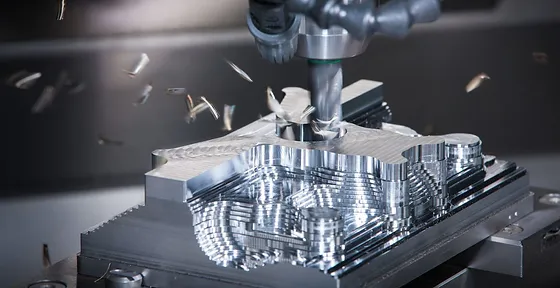Introduction:
Computer Numerical Control (CNC) machines have revolutionized the manufacturing industry. They have allowed for increased precision and efficiency in production processes, making it a highly sought-after skill in the job market. However, with technological advancements and a growing demand for remote work, many companies are now considering whether to hire a remote CNC programmer. In this article, we will discuss the benefits and drawbacks of hiring a remote CNC professional, and help you decide if it’s the right choice for your business.
Benefits of Hiring a Remote CNC Programmer:
Cost-Effectiveness:
Hiring a remote professional can significantly reduce overhead costs for your business. You will save on expenses such as office space, utilities, and equipment. Additionally, you can potentially access a more extensive talent pool with competitive rates due to the elimination of geographical restrictions.
Increased Flexibility:
A remote CNC professional can offer your business increased flexibility. With remote work, there is the possibility of working with programmers across different time zones, allowing for round-the-clock production. This can be especially beneficial for businesses with tight deadlines or those looking to scale up their operations.
Access to a Wider Talent Pool:
By hiring a remote CNC programmer, you are not limited by geographical boundaries. This means you have access to a more extensive talent pool with varied skill sets, experiences, and specializations. You can potentially find the perfect match for your business needs, regardless of your location.
Improved Employee Satisfaction:
Remote work has been shown to increase employee satisfaction, leading to higher retention rates and overall productivity. Remote CNC programmers can enjoy the flexibility to create a work-life balance that suits their needs, ultimately resulting in happier and more dedicated employees.
Drawbacks of Hiring a Remote CNC Programmer:
Communication Challenges:
One of the primary concerns when hiring remote professionals is communication. Working with a remote CNC programmer might require additional effort to establish clear communication channels and ensure that all parties are on the same page regarding project expectations and deadlines.
Security Risks:
Another potential drawback of hiring a remote CNC professional is the increased risk of security breaches. It is crucial to ensure that the remote worker has secure access to your company’s systems and that they follow strict security protocols to protect your business’s sensitive information.
Reduced Oversight:
Hiring a remote CNC programmer means that you will have less direct oversight of their work. This can be a concern for some businesses, as it may be more challenging to monitor progress and address any issues that arise promptly. Establishing clear expectations and regular check-ins can help mitigate this risk.
Potential Loss of Company Culture:
A remote CNC professional may not have the same level of immersion in your company culture as an in-house employee. This could lead to a potential disconnect between the remote worker and the rest of the team, which may impact overall collaboration and productivity.
Tips for Hiring a Remote CNC Programmer:
If you have weighed the pros and cons and decided to hire a remote CNC programmer, here are some tips to ensure a successful partnership:
Define Clear Expectations:
Before hiring a remote CNC professional, it is crucial to define the scope of their role and the expectations for their work. Provide them with a detailed project description, deadlines, and any other relevant information to ensure they understand their responsibilities.
Establish Communication Channels:
Establishing effective communication channels is essential for the success of any remote working relationship. Utilize tools such as video conferencing, instant messaging, and project management software to facilitate communication between your remote CNC programmer and the rest of the team.
Implement Security Protocols:
To mitigate potential security risks, ensure that your remote CNC professional follows strict security protocols. This may include using secure internet connections, accessing your company’s systems through a virtual private network (VPN), and regularly updating software and hardware to prevent security vulnerabilities.
Set up Regular Check-ins:
Schedule regular check-ins with your remote CNC programmer to discuss progress, address any concerns, and ensure that they are on track to meet deadlines. These check-ins can be conducted via video calls or phone calls, depending on your preference.
Foster a Collaborative Environment:
Encourage collaboration and a sense of camaraderie between your remote CNC programmer and the rest of the team. This can be achieved through virtual team-building activities, shared online workspaces, and regular communication between all team members.
Offer Training and Support:
Provide your remote CNC professional with the necessary training and support to ensure they can perform their role effectively. This may include access to online resources, training materials, or even offering to cover the cost of relevant courses or certifications.
Monitor Performance:
Keep track of your remote CNC programmer’s performance to ensure they are meeting expectations and delivering quality work. Utilize performance metrics, regular check-ins, and feedback from other team members to gauge their performance and address any issues promptly.
Conclusion:
Hiring a remote CNC programmer can offer several benefits to your business, such as cost-effectiveness, increased flexibility, and access to a wider talent pool. However, there are also potential drawbacks, including communication challenges, security risks, and reduced oversight. By carefully considering these factors and implementing the tips provided, you can successfully integrate a remote CNC professional into your team and enjoy the benefits of remote work in the manufacturing industry.
In conclusion, the decision to hire a remote CNC programmer will depend on your specific business needs and circumstances. By carefully weighing the pros and cons, you can make an informed decision that best suits your company’s goals and requirements. Remember to establish clear expectations, foster a collaborative environment, and provide ongoing support to ensure the success of your remote CNC programmer and your business as a whole.
Related Resources
- Remote CNC programmer: “Discuss remote CNC programming with industry experts on Practical Machinist.”
- CNC machines: “Get an overview of CNC machines and their history at Thomasnet.”
- Manufacturing industry: “Learn how the manufacturing industry is embracing remote work on Manufacturing Global.”

